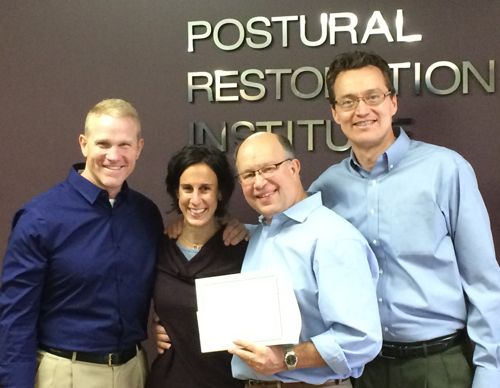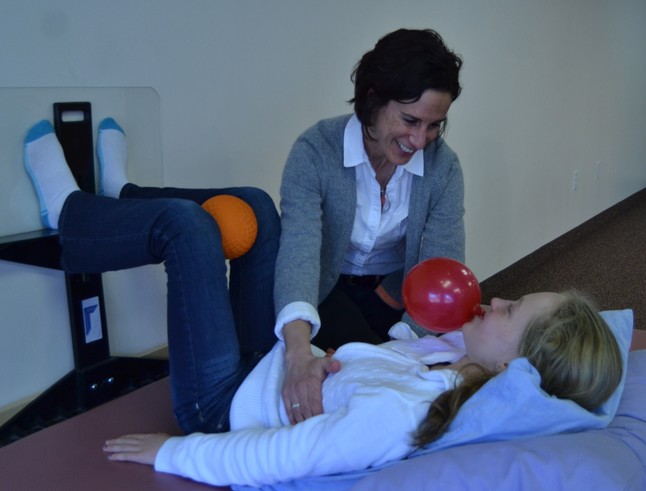Postural Restoration Institute®

Postural Restoration Certified (PRC) physical therapists have a thorough understanding of human asymmetry, common postural patterns, and common positions used for compensation, usually associated with pain or with problems moving.
The theories and concepts of Postural Restoration Institute™ (PRI) are different than traditional physical therapy exercises as they focus on unique body positioning and asymmetric activation of specific muscles, while focusing on breathing. .jpg) From a PRI perspective, the attention to breathing is too important to overlook. The way you use your muscles changes depending on the position of the powerful respiratory muscle, called your respiratory diaphragm. The diaphragm is a mushroom-shaped muscle that lives in the middle of your body. It attaches to the front your lower spine, and inner surface of your lower rib cage. It is below your lungs and domes up over your liver and other digestive organs. It is your true core! (ps... notice it's asymmetry).
From a PRI perspective, the attention to breathing is too important to overlook. The way you use your muscles changes depending on the position of the powerful respiratory muscle, called your respiratory diaphragm. The diaphragm is a mushroom-shaped muscle that lives in the middle of your body. It attaches to the front your lower spine, and inner surface of your lower rib cage. It is below your lungs and domes up over your liver and other digestive organs. It is your true core! (ps... notice it's asymmetry).
The primary role of the respiratory diaphragm should be to help you breathe efficiently. If it is the wrong position (ie. not domed) because of poor posture, the brain recruits it for postural demands. This is when things start change with one's posture and biomechanical pain patterns begin. Examples of pain caused by a faulty diaphragm position include: back pain, shoulder pain, hip pain, knee pain, and foot pain, including plantar fasciitis. (See Mechanical Joint and Back Pain" on the left).
Because of the importance of diaphragm position and function, all of the PRI exercises incorporate breathing. For children, I use balloons, party toys and pinwheels to make repositioning and strengthening the diaphragm FUN!

Respecting human asymmetry, these exercises are performed differently on the right than they are on the left. This is a very different concept compared to most traditional physical therapy exercises, and very effective.

And, you guessesd it, because of the asymmetrical understanding of the Postural Restoration Institute® techniques, they are very effective at treating scoliosis. At Advance Physical Therapy (www.advance-physicaltherapy.com), we use PRI exercises in combination with Schroth-Based techniques for a high-powered approach to treat scoliosis. (See "Scoliosis Rehab").